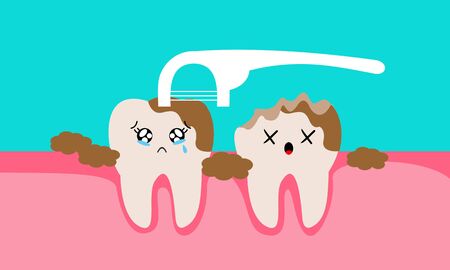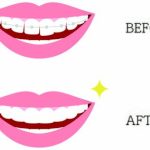1. Understanding Teeth Discoloration
A bright, white smile is something many people desire, but over time, teeth can become stained or discolored due to various factors. Understanding what causes teeth discoloration can help you take steps to prevent it and maintain a radiant smile.
Common Causes of Teeth Stains
Teeth stains can be caused by multiple factors, ranging from the foods and drinks we consume to lifestyle habits and aging. Below are some of the most common culprits:
Food and Drinks
Certain foods and beverages contain pigments that can stain your enamel over time. Some of the biggest offenders include:
| Food & Drink | Why It Stains |
|---|---|
| Coffee & Tea | Contain tannins that lead to discoloration |
| Red Wine | Rich in chromogens and acids that stain teeth |
| Soda & Sugary Drinks | The acid weakens enamel, making stains more visible |
| Berries (Blueberries, Blackberries) | Pigments in dark-colored fruits cling to enamel |
| Soy Sauce & Tomato-Based Sauces | The deep color can leave lasting stains on teeth |
Smoking and Tobacco Use
Tobacco products, including cigarettes and chewing tobacco, contain nicotine and tar, which cause yellow or brown stains on teeth. Long-term use can result in stubborn discoloration that is difficult to remove with regular brushing.
Aging and Natural Wear
As we age, the outer layer of our teeth (enamel) gradually wears down, exposing the yellowish dentin underneath. This natural process makes teeth appear duller or more yellow over time.
Poor Oral Hygiene
If you don’t brush and floss regularly, plaque and tartar buildup can contribute to discoloration. Maintaining good oral hygiene helps prevent stains from setting in.
2. Safe and Effective Whitening Ingredients
Achieving a brighter smile at home is possible with the right ingredients. Many natural and over-the-counter options can help whiten teeth without causing damage to enamel or gums. Below, we explore some of the most effective DIY teeth-whitening ingredients.
Baking Soda
Baking soda is a popular ingredient for natural teeth whitening due to its mild abrasiveness, which helps remove surface stains without being too harsh on enamel.
How It Works
Baking soda neutralizes acids in the mouth and gently scrubs away stains, making it a safe and effective choice for whitening.
How to Use
- Mix a small amount of baking soda with water to form a paste.
- Brush your teeth with this paste for about two minutes.
- Rinse thoroughly with water.
- Use 2-3 times a week to avoid excessive abrasion.
Hydrogen Peroxide
Hydrogen peroxide is a common ingredient in many commercial whitening products and can also be used safely at home when diluted properly.
How It Works
This mild bleaching agent helps break down stains on the teeth, making them appear whiter over time.
How to Use
- Mix equal parts hydrogen peroxide (3%) and water.
- Swish the solution around in your mouth for 30 seconds.
- Spit it out and rinse thoroughly with water.
- Use 2-3 times per week to avoid irritation.
Activated Charcoal
Activated charcoal is known for its ability to absorb toxins and remove stains from the surface of teeth.
How It Works
The porous nature of activated charcoal binds to stain-causing substances, helping lift them away from the enamel.
How to Use
- Dampen your toothbrush and dip it into activated charcoal powder.
- Gently brush your teeth for 1-2 minutes.
- Rinse thoroughly until all charcoal residue is gone.
- Use once or twice a week to prevent enamel damage.
Comparison of Whitening Ingredients
| Ingredient | Main Benefit | Recommended Usage | Caution |
|---|---|---|---|
| Baking Soda | Mild abrasive that removes stains | 2-3 times per week | Avoid overuse to prevent enamel wear |
| Hydrogen Peroxide | Mild bleaching effect on stains | 2-3 times per week | Always dilute; excessive use may cause gum irritation |
| Activated Charcoal | Absorbs stains from the tooth surface | 1-2 times per week | Avoid frequent use to protect enamel integrity |
Using these natural and over-the-counter ingredients correctly can help you achieve a whiter smile without exposing your teeth to harsh chemicals. Always follow recommended usage guidelines to maintain healthy enamel while brightening your teeth effectively.

3. DIY Teeth Whitening Methods
Achieving a brighter smile doesn’t always require expensive treatments. There are plenty of effective and affordable DIY teeth whitening methods you can try at home. Here are some simple techniques to help you whiten your teeth safely.
Whitening Toothpaste
One of the easiest ways to whiten your teeth is by using a whitening toothpaste. These toothpastes contain mild abrasives and special ingredients like hydrogen peroxide or baking soda to remove surface stains.
| Type of Whitening Toothpaste | Main Ingredients | Effectiveness |
|---|---|---|
| Hydrogen Peroxide-Based | Hydrogen peroxide, fluoride | Good for removing surface stains |
| Baking Soda-Based | Baking soda, mild abrasives | Mild whitening effect, good for daily use |
| Charcoal Toothpaste | Activated charcoal, clay minerals | Abrasive, may help remove stains but should be used sparingly |
DIY Whitening Trays
If you want a more intensive whitening treatment, you can create your own whitening trays at home. Heres how:
What You Need:
- A mouthguard or boil-and-bite tray (available at drugstores)
- A small amount of hydrogen peroxide or a whitening gel
- A toothbrush and toothpaste for aftercare
Steps:
- Mold the mouthguard to fit your teeth by following package instructions.
- Add a small drop of hydrogen peroxide or whitening gel inside the tray.
- Wear the tray for 10-15 minutes, then rinse thoroughly.
- Brush your teeth as usual to remove any residue.
- Avoid eating or drinking anything staining (like coffee or wine) for at least an hour.
Homemade Mouth Rinses
Mouth rinses can also help brighten your smile by reducing stains and freshening your breath. Here are two simple options:
| Mouth Rinse Type | Main Ingredients | How to Use |
|---|---|---|
| Baking Soda Rinse | Baking soda, water, peppermint oil (optional) | Dissolve 1 teaspoon of baking soda in a glass of water. Swish for 30 seconds, then spit out. |
| Hydrogen Peroxide Rinse | Hydrogen peroxide (3%), water | Dilute equal parts hydrogen peroxide and water. Swish for 30 seconds, then rinse with plain water. |
These DIY teeth whitening methods are easy to incorporate into your routine and can help you achieve noticeable results over time. Just be sure to use them in moderation to protect your enamel and maintain oral health.
4. Precautions and Potential Risks
DIY teeth whitening can be an effective way to brighten your smile, but it’s important to understand the potential risks involved. Using whitening products incorrectly or too frequently may lead to issues like tooth sensitivity and enamel erosion. Let’s take a closer look at these risks and how you can minimize them.
Common Side Effects of DIY Teeth Whitening
While many at-home whitening methods are safe, improper use can cause unwanted side effects. Here are some of the most common concerns:
| Side Effect | Description | How to Minimize It |
|---|---|---|
| Tooth Sensitivity | The bleaching agents in whitening products can temporarily make your teeth more sensitive to hot, cold, or sweet foods. | Use a toothpaste designed for sensitive teeth and avoid very hot or cold foods after whitening. |
| Enamel Erosion | Overuse of whitening treatments, especially acidic ones like lemon juice and baking soda, can wear down enamel over time. | Avoid highly acidic DIY methods and limit whitening treatments to recommended usage. |
| Irritated Gums | If whitening gel or homemade pastes come into contact with your gums, they may cause irritation or even burns. | Apply products carefully, avoiding direct contact with the gums. |
Best Practices for Safe DIY Whitening
Avoid Overuse
Using whitening treatments too often can damage your teeth. Follow the recommended frequency—usually no more than once or twice per week for DIY methods.
Select Gentle Ingredients
Certain natural ingredients, like hydrogen peroxide and baking soda, can be effective but should be used sparingly. Avoid harsh acids such as lemon juice or vinegar, which may weaken enamel.
Listen to Your Teeth
If you experience pain or discomfort after using a whitening method, stop immediately and give your teeth time to recover before trying again.
Maintain Good Oral Hygiene
A healthy oral care routine—including brushing twice daily, flossing, and regular dental checkups—can help keep your teeth naturally white without excessive whitening treatments.
When to See a Dentist
If you notice persistent sensitivity, gum irritation, or changes in your enamel after using DIY whitening methods, consult a dentist. They can provide professional guidance on safer alternatives tailored to your needs.
5. Maintaining a Bright, White Smile
Once youve achieved a whiter smile with DIY teeth whitening methods, the next step is to maintain those results for as long as possible. With the right oral care habits, you can keep your teeth looking bright and healthy while preventing stains from returning.
Smart Diet Choices
Your diet plays a significant role in the color of your teeth. Certain foods and drinks can stain enamel over time, while others help keep your smile bright. Here’s a quick guide:
| Foods & Drinks to Limit | Teeth-Friendly Options |
|---|---|
| Coffee, tea, and red wine | Dairy products (cheese, yogurt, milk) |
| Soda and dark-colored juices | Crisp fruits and vegetables (apples, carrots, celery) |
| Soy sauce and tomato-based sauces | Nuts and seeds for natural scrubbing effects |
| Berries (blueberries, blackberries) | Water to rinse away stains |
Proper Brushing Techniques
The way you brush matters just as much as how often you do it. To maintain your white smile:
- Use a soft-bristled toothbrush: Harsh bristles can wear down enamel and make teeth more prone to staining.
- Avoid brushing too hard: Gentle circular motions are best for removing surface stains without damaging enamel.
- Select a whitening toothpaste: Look for one with mild abrasives that help lift stains without being too harsh.
- Brush at least twice a day: Ideally, brush after meals to prevent staining substances from settling on your teeth.
- Add flossing to your routine: Flossing removes plaque buildup between teeth that can lead to discoloration.
The Role of Professional Touch-Ups
No matter how well you care for your teeth at home, occasional professional treatments can help extend your whitening results. Consider these options:
- Dentist Cleanings: Regular cleanings remove plaque and tartar that contribute to discoloration.
- Treatment Boosters: Some dental offices offer quick touch-up whitening treatments for maintenance.
- Treatment-Approved Whitening Trays: Your dentist may recommend take-home trays with professional-grade whitening gel for occasional use.
Lifestyle Habits That Help Maintain Whiteness
A few small changes in daily habits can make a big difference in keeping your teeth white:
- Sip Through a Straw: When drinking coffee or soda, using a straw minimizes direct contact with your teeth.
- Rinse After Eating: Swishing water around your mouth after consuming stain-causing foods can prevent discoloration.
- Avoid Smoking: Tobacco is one of the biggest culprits behind yellowed teeth.
- Chew Sugar-Free Gum: This helps stimulate saliva production, which naturally cleanses your teeth.
A radiant smile requires ongoing care, but by making smart choices every day, you can enjoy long-lasting whitening results without extra effort!

